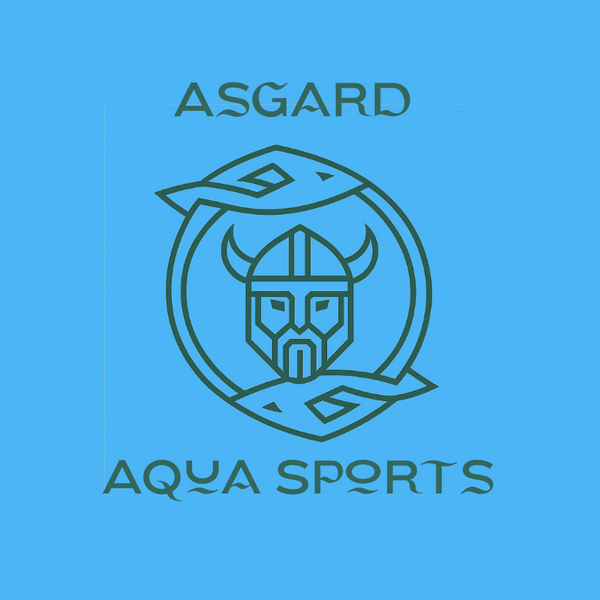
Fins play a crucial role in making the SUP straight and manoeuvrability of paddleboards. Simply put, their shape, quantity, and size contribute to the board's behaviour on the water.
Without fins, maintaining a straight line becomes challenging, as the board tends to move sideways. Additionally, the placement of SUP fins significantly influences how the board handles different water conditions.
Therefore, carefully considering your paddleboard fin setup is essential for an optimal stand-up paddleboarding experience. So, let’s get into the details.
SUP Fin Setup
Stand-up paddleboard (SUP) comes with various fin setups, each influencing its performance differently. The most common fin setups are-
- Single Fin:
- Placement: Located at the tail.
- Illustration: A single-fin stand-up paddleboard.
Why A Single Centre Fin?

Single fins are a common starting point for paddleboards, available in removable or fixed configurations with adjustable settings. The placement of the centre fin significantly impacts performance:
- Forward Placement: Enhances manoeuvrability and quick turns, ideal for surfing.
- Backward Placement: Provides stability, tracking, and speed, suitable for longer-distance paddling.
Adjustable centre fins often have default settings that strike a balance between stability and manoeuvrability. The design considerations vary based on the purpose:
- Touring: Emphasizes straight-line paddling, featuring a wide base and a longer leading edge for stabilization while minimizing drag.
- Racing: Prioritizes tracking and speed, achieved through larger surface areas that balance drag reduction and manoeuvrability around buoys.
2+1 Set-up

- Main Middle Fin: Positioned at the tail.
- Side Fins: Two smaller fins, known as side or thruster fins, on either side of the main fin.
- Illustration: A 3-fin stand-up paddleboard.
Why Should I Use Side Fins?
- Steering and Speed: The 2+1 configuration aids in steering and compresses water flow, resulting in increased speed. Commonly found on all-rounder SUPs designed for surfing like our FatStick Wooden Menace, FatStick Airstick Starter, and FatStick Pure Art SUP.
- Grip vs. Speed: While extra fins boost grip, they can introduce drag, potentially slowing you down. However, skilled riders can leverage waves to maintain forward momentum effectively.
- Versatility: The 2+1 setup is suitable for flat water SUPs, providing good tracking and resistance to sideways drift from crosswinds.
- Looser Board Option: Riding without a centre fin in this setup creates a looser board, particularly beneficial in shallow conditions.
Where to Position the Middle Fin?
For SUP boards, the US fin box is the most common fin system, featuring a track slightly longer than the fin itself.
This design allows you to tailor your board's performance by adjusting the fin placement toward either the nose or tail of the board. Here's what you can expect based on the fin's position:
- Forward Towards the Nose (perfect for surfing): Enhances manoeuvrability, making your board feel more responsive and quicker to turn.
- In the Middle: Provides a balanced mix of performance characteristics and offers a combination of control, stability, tracking, and speed.
- Furthest to the Back: Ideal for long-distance SUP or when seeking increased straight-line tracking. It enhances the stability, tracking, and speed of your board. However, it comes with a trade-off—slower turns.
What Are The Technical Aspects Of A Fin?
Understanding the various technical aspects of a fin is crucial for optimizing your paddleboard's performance.
- Fin Base: Located closest to the board, this is typically the widest part, ensuring stabilization and tracking.
- Tip Design: Contributes to speed and tracking.
- Leading Edge: The leading edge, whether vertical or swept back (rake), influences turning, pivot, and water release, enhancing speed. Increased rake is especially useful for preventing weed entanglement; some fins even feature cutting leading edges for this purpose.
- Trailing Edge: Influences turning, pivot, and water release, ultimately impacting speed.
- CANT: On multi-fin boards, outboard fins may CANT toward the board's edge, enhancing responsiveness during turns. An upright fin with no cant tends to be faster than one with CANT.
- Toe In: The angle relative to the centreline, known as the toe, can be adjusted for varying levels of grip. More toe generally results in increased grip.
- Foil Design: Fins create lift and direction through their foil design. Different foil shapes and thicknesses alter directional forces.
- Stiffness and Flex: Provides stability but resists turning. Flexibility, or flex, can be beneficial, offering responsiveness to water conditions and flexibility over obstacles like rocks and logs.
Wrapping Up
Tailoring the fin placement on your board can significantly enhance its performance, catering to your specific paddling needs; whether it's stability, manoeuvrability, or speed. Striking the right balance between your paddle activities and personal preferences is key.
Feel free to experiment and make adjustments until you find the perfect fin setup that suits your unique adventures.

